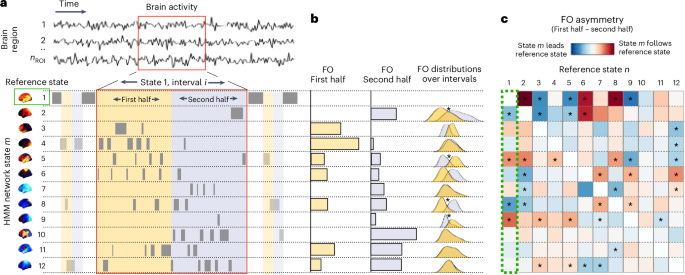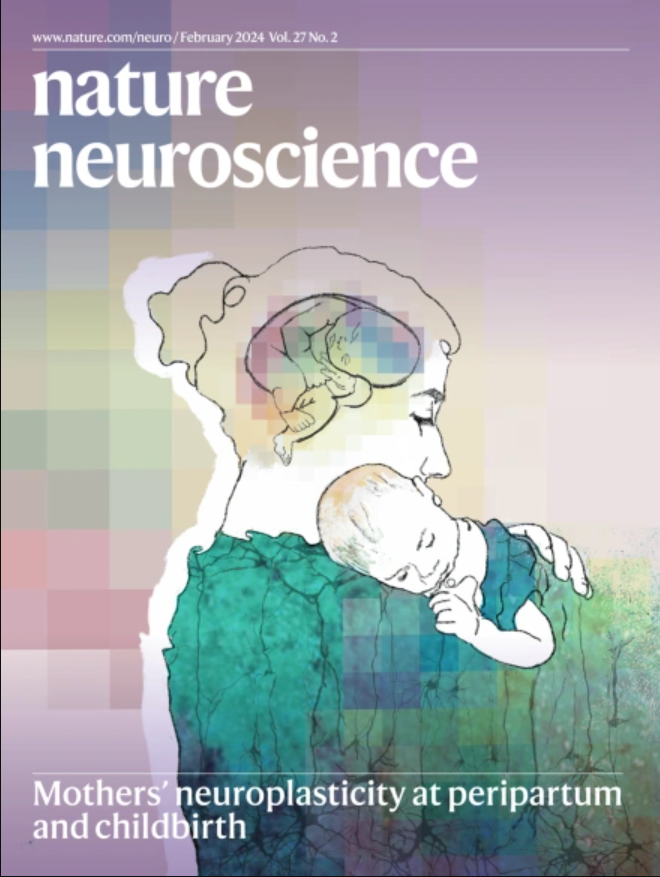Large-scale cortical functional networks are organized in structured cycles
IF 20
1区 医学
Q1 NEUROSCIENCES
引用次数: 0
Abstract
The brain seamlessly performs a diverse set of cognitive functions like attention, memory and sensory processing, yet it is unclear how it ensures that each of these is fulfilled within a reasonable period. One way in which this requirement can be met is if each of these cognitive functions occurs as part of a repeated cycle. Here we studied the temporal evolution of canonical, large-scale, cortical functional networks that are thought to underlie cognition. We showed that, although network dynamics are stochastic, the overall ordering of their activity forms a robust cyclical pattern. This cyclical structure groups states with similar function and spectral content at specific phases of the cycle and occurs at timescales of 300–1,000 ms. These results are reproduced in five large magnetoencephalography datasets. Moreover, we show that metrics that characterize the cycle strength and speed are heritable and relate to age, cognition and behavioral performance. These results show that the activations of a canonical set of large-scale cortical functional networks are organized in an inherently cyclical manner, ensuring periodic activation of essential cognitive functions. The human brain cycles through a repertoire of brain networks on a 1-second timescale during rest and tasks. This cycling appears to allow periodic engagement of essential cognitive functions, with the speed of cycling linked to genetics and age.


大规模的皮质功能网络以结构化的循环组织
大脑无缝地执行一系列不同的认知功能,如注意力、记忆和感觉处理,但目前还不清楚它是如何确保这些功能在合理的时间内完成的。满足这一要求的一种方式是,如果这些认知功能都是一个重复循环的一部分。在这里,我们研究了规范的、大规模的、被认为是认知基础的皮质功能网络的时间进化。我们表明,尽管网络动态是随机的,但其活动的总体顺序形成了一个强大的周期性模式。这种循环结构在周期的特定阶段将具有相似功能和光谱含量的状态分组,并发生在300-1,000 ms的时间尺度上。这些结果在5个大型脑磁图数据集中得到了再现。此外,我们表明表征循环强度和速度的指标是可遗传的,并与年龄、认知和行为表现有关。这些结果表明,一组典型的大规模皮质功能网络的激活以固有的周期性方式组织,确保了基本认知功能的周期性激活。
本文章由计算机程序翻译,如有差异,请以英文原文为准。
求助全文
约1分钟内获得全文
求助全文
来源期刊

Nature neuroscience
医学-神经科学
CiteScore
38.60
自引率
1.20%
发文量
212
审稿时长
1 months
期刊介绍:
Nature Neuroscience, a multidisciplinary journal, publishes papers of the utmost quality and significance across all realms of neuroscience. The editors welcome contributions spanning molecular, cellular, systems, and cognitive neuroscience, along with psychophysics, computational modeling, and nervous system disorders. While no area is off-limits, studies offering fundamental insights into nervous system function receive priority.
The journal offers high visibility to both readers and authors, fostering interdisciplinary communication and accessibility to a broad audience. It maintains high standards of copy editing and production, rigorous peer review, rapid publication, and operates independently from academic societies and other vested interests.
In addition to primary research, Nature Neuroscience features news and views, reviews, editorials, commentaries, perspectives, book reviews, and correspondence, aiming to serve as the voice of the global neuroscience community.
 求助内容:
求助内容: 应助结果提醒方式:
应助结果提醒方式:


